Transporting the Wheelchair in the Car
Approved vehicles
The wheelchair may only be transported in vehicles that are approved and suited for this purpose.
Car passenger mode: Transport in a vehicle as a car seat with a passenger
Your wheelchair is tested and approved for use as a car seat in a moving vehicle in accordance with ISO 7176-19. To find out how to load and secure the vehicle safely, please see Car Passenger Mode.
Transport as Luggage (Without Passenger)
When loading the wheelchair, please take into account the dimensions of the wheelchair (see Technical Specifications) and the space available in your vehicle. To load and unload the wheelchair into and out of a car, it is recommended to use a ramp designed for this purpose. Please also refer to the operating instructions for the ramp.
The remote control mode may only be used as long as no person is sitting on BRO
When the remote control mode is selected, control of BRO through the joystick is disabled. Therefore, the person with the remote control has control of the wheelchair. As all of BRO's motors can be moved manually in remote control mode, there is a risk of the device tipping over in case of inattentive or unaware manipulation of one or several motors. If a person is sitting on BRO during this time, it can be very dangerous and may injure the person.
Space-saving transport
The back support can be folded down to make it easier to transport the wheelchair (see Folding of the Back Support). If necessary, the complete back support can also be removed by means of a quick-release system, see alsoRemoving the Back Support.
Assistant may be needed
Loading the wheelchair as an item of luggage into a car requires you to get out of the wheelchair. If necessary, have an assistant help you and instruct them on how to load the wheelchair correctly.
To secure the wheelchair correctly in the car, have at least three sets lashing straps (SpanSet) ready:
1x small lashing strap to secure the back support
2x large lashing straps (minimum holding force 1600N/160kg each) to secure the wheelchair at the front and back
Proceed as follows to get the wheelchair into the car using the ramp:
Reverse to the tailgate of the car.
Switch to park mode
Get out of the BRO
Remove any loose objects (e.g. mobile phone) that are attached to the wheelchair
If necessary, remove the back cushion (see Back Cushion (Accessory))
Fold down the back support (see Folding of the Back Supportand secure it with a clamp (see Figure 76, “Securing the back support to prevent it from unfolding again”)
Position and secure the loading ramp as per the ramp instructions.
Switch to track mode or manual mode.
Use the joystick, the X-Box (if purchased) or the app (remote control) to manoeuvre the wheelchair into the car. The operating mode has to be changed for this, depending on the car. Seek advice from a reseller or Scewo.
If possible, activate the track mode at the end to transport the wheelchair in the car. The highest possible friction between the wheelchair and the floor of the trunk is achieved in track mode (better safety against slipping).
Switch the wheelchair off completely using the main switch or press the standby button on the control panel.
Secure the wheelchair with at least two approved tie-down lashing straps. We recommend securing the wheelchair as shown in Figure 77, “Recommended securement of BRO wheelchair V1.1” .
Check that the wheelchair is properly secured and locked into place.
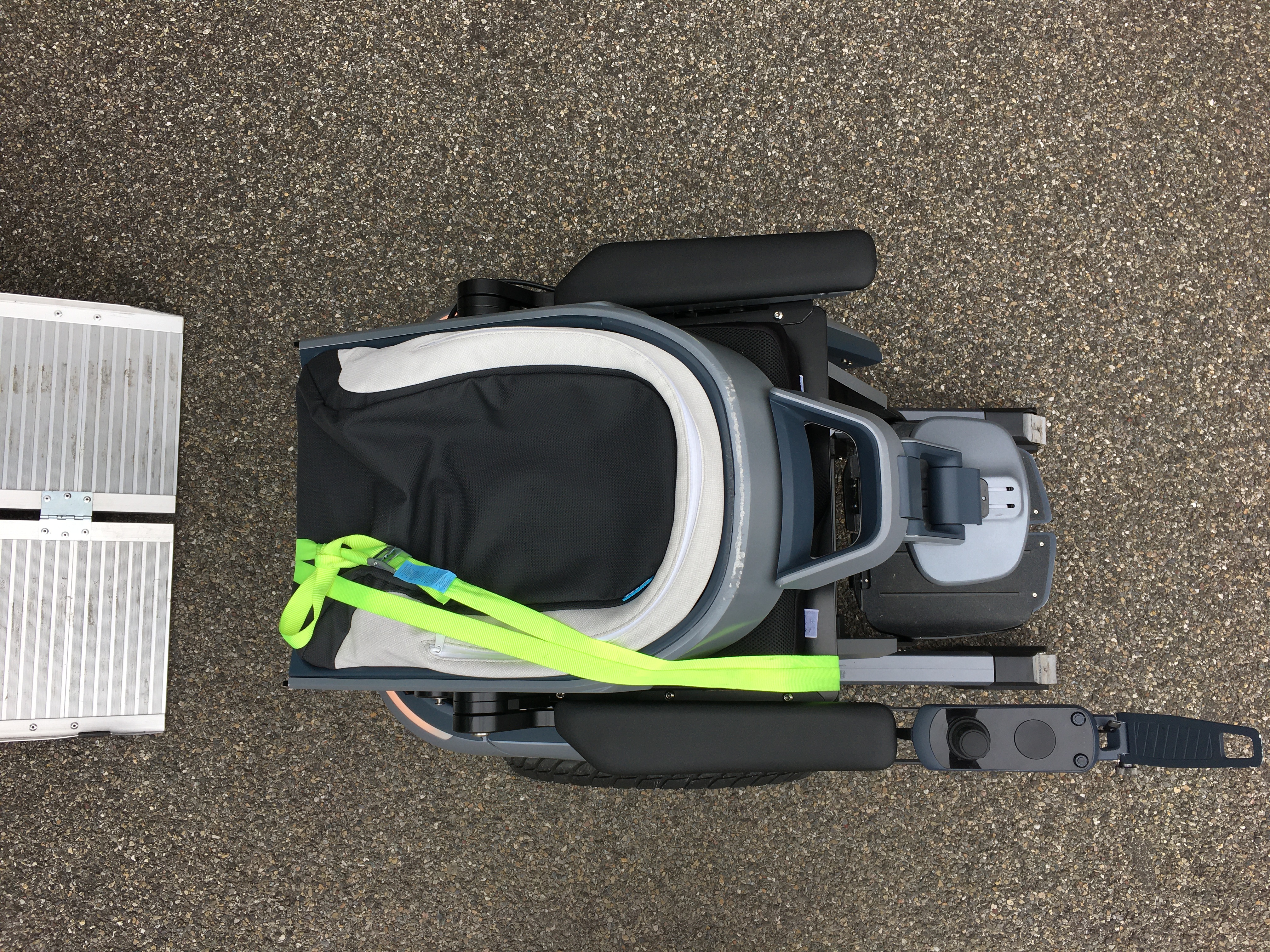 (a) General view | 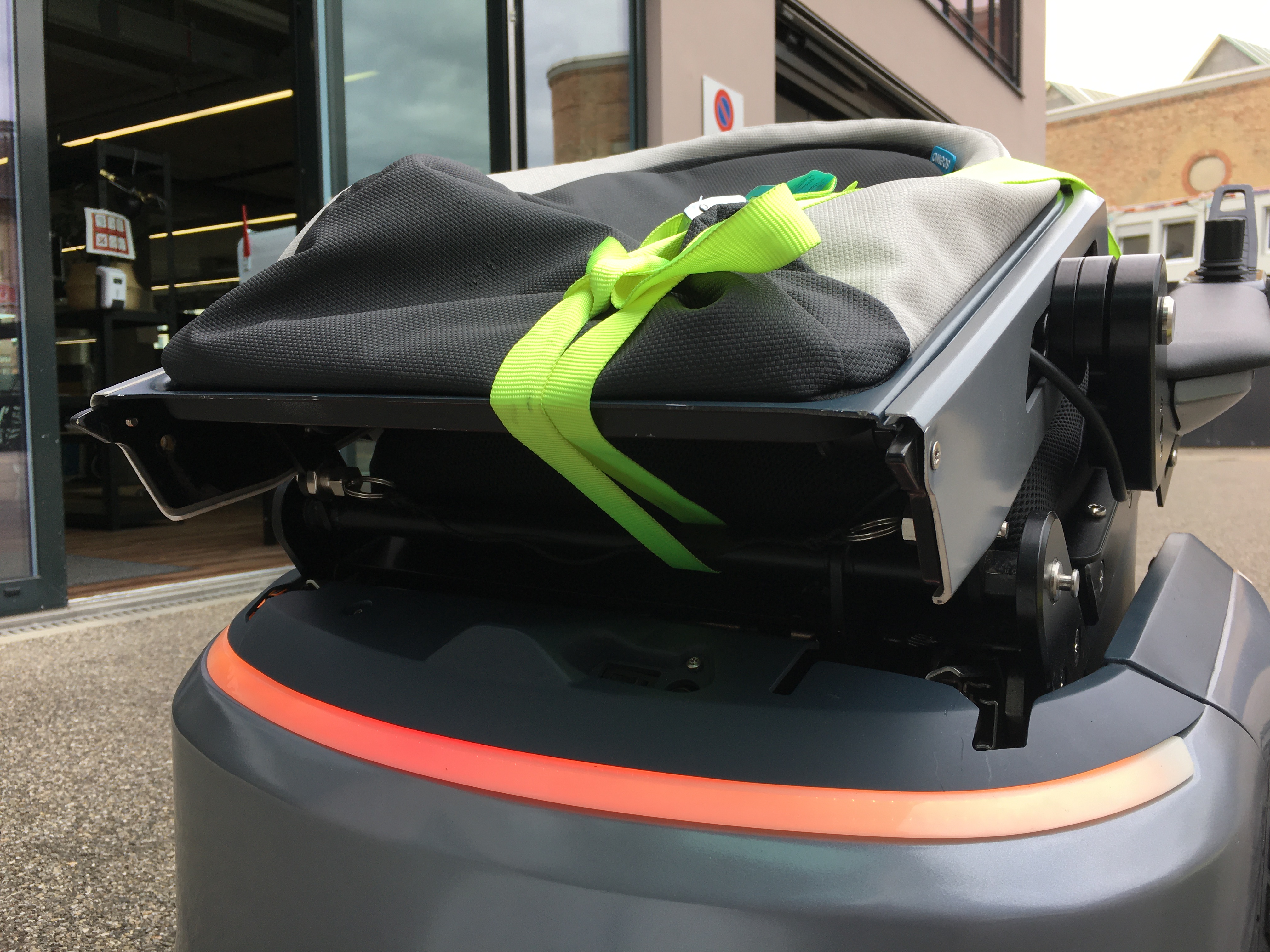 (b) Rear detail | 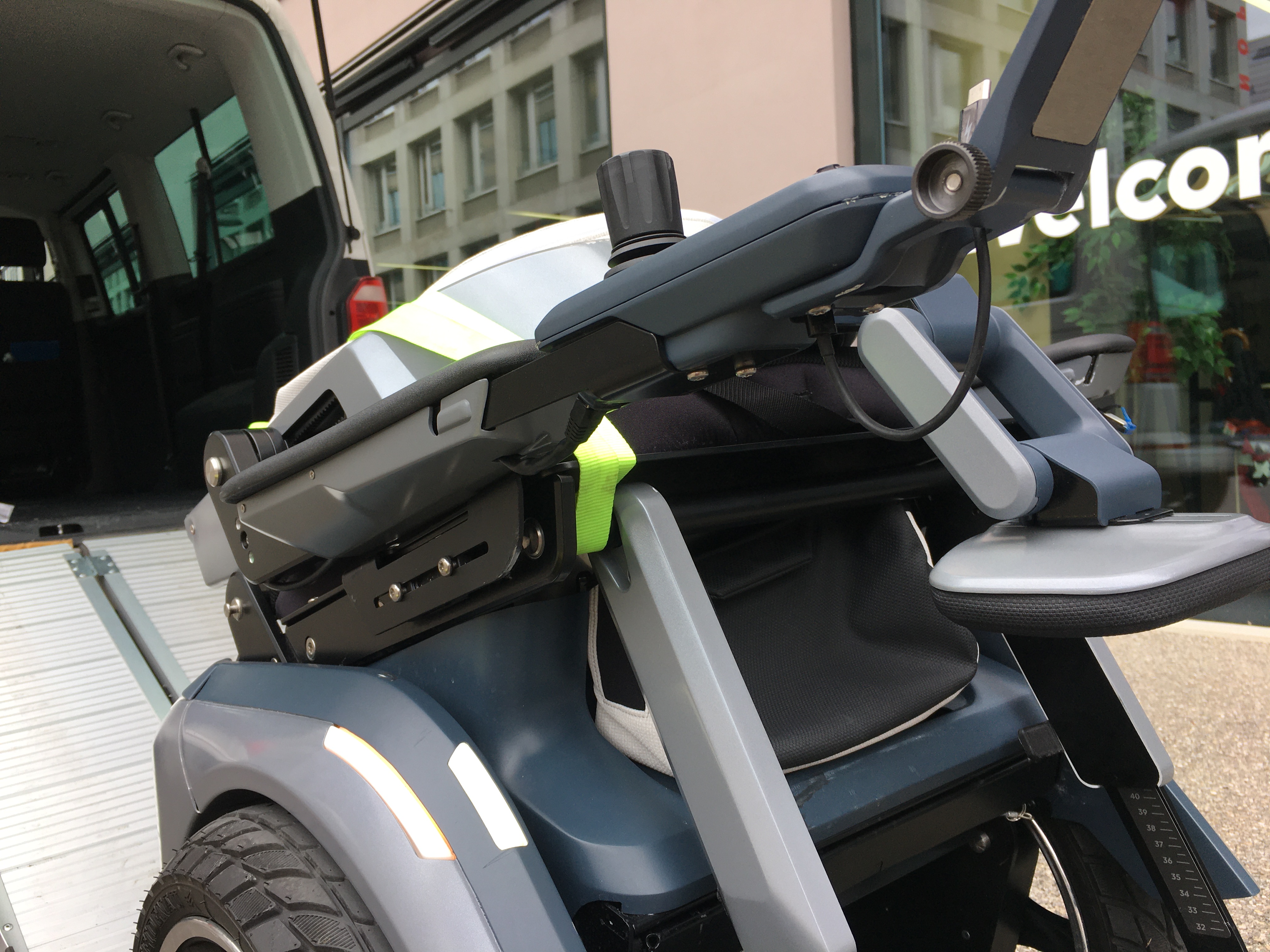 (c) Front detail |
 (a) Securing wheelchair at the front 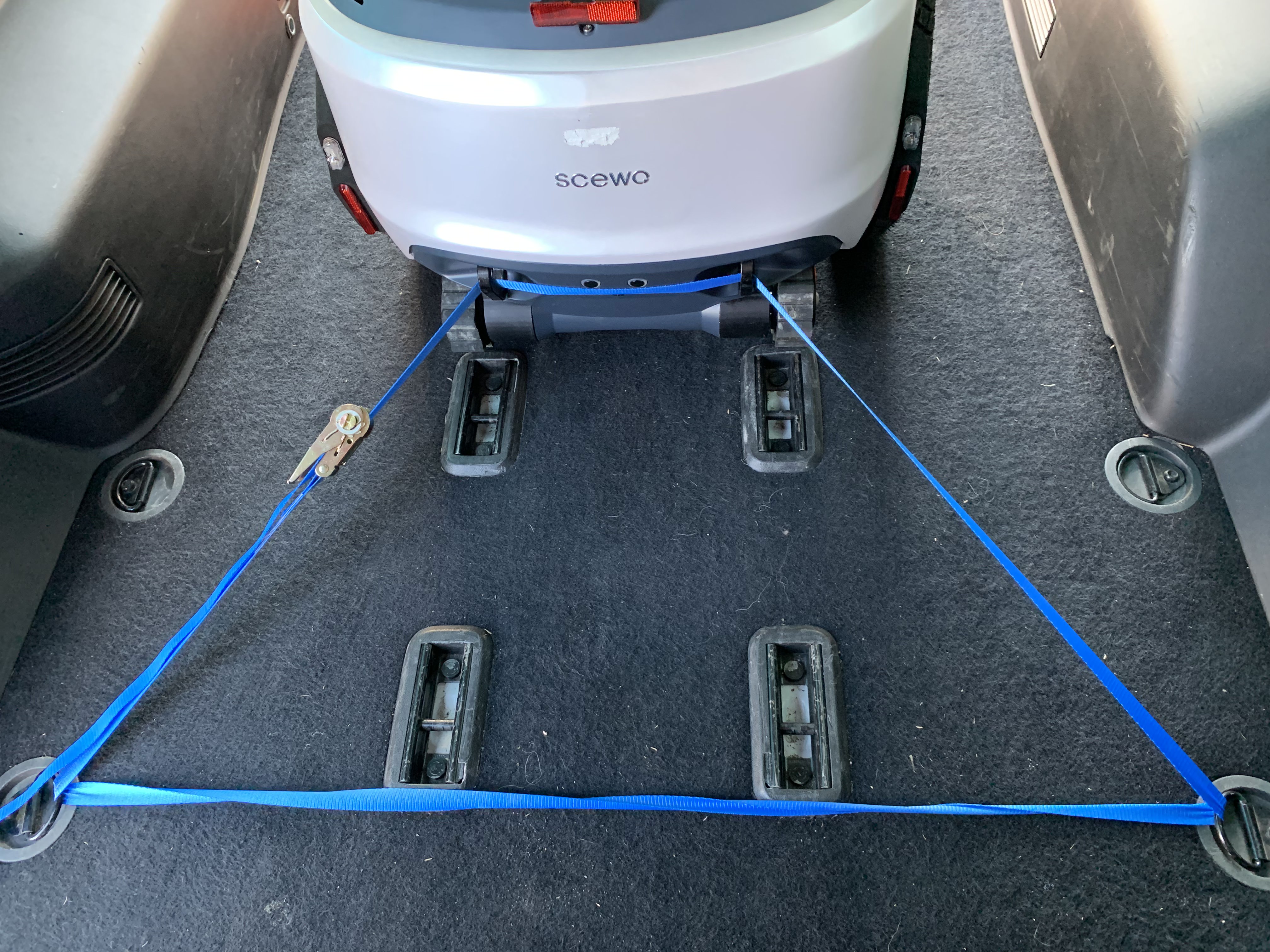 (c) Securing wheelchair at the back | 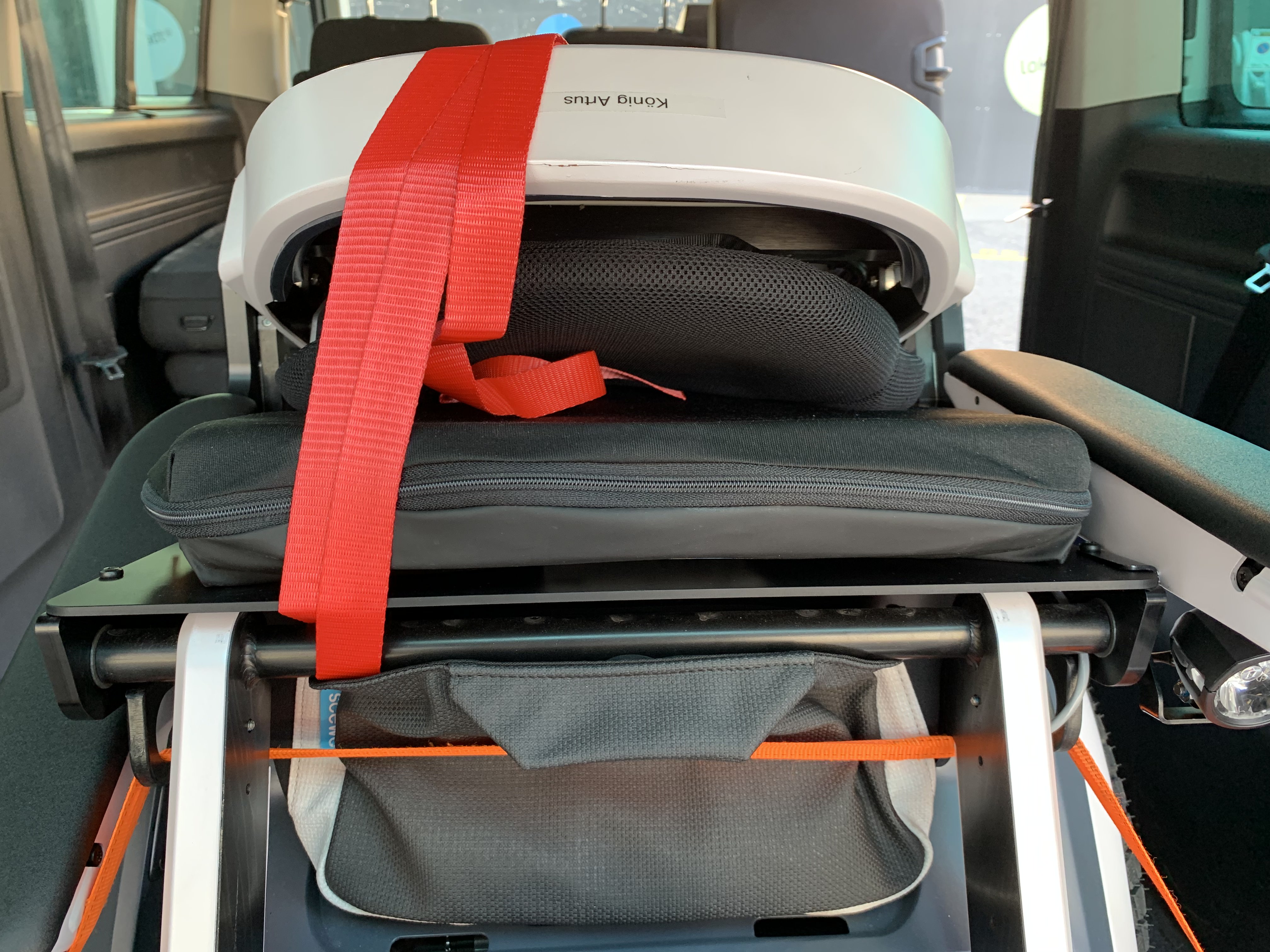 (b) Front details 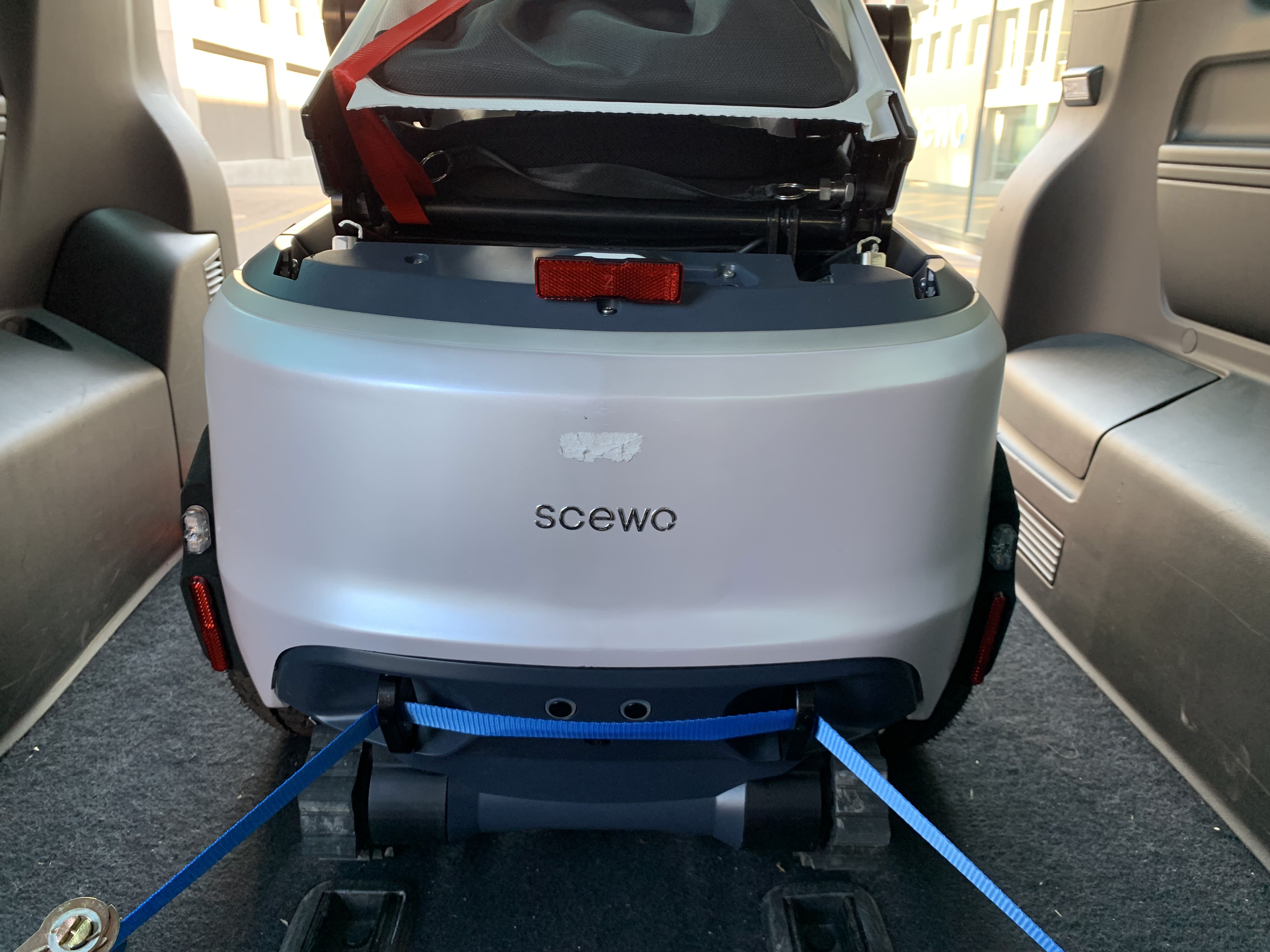 (d) Rear details |